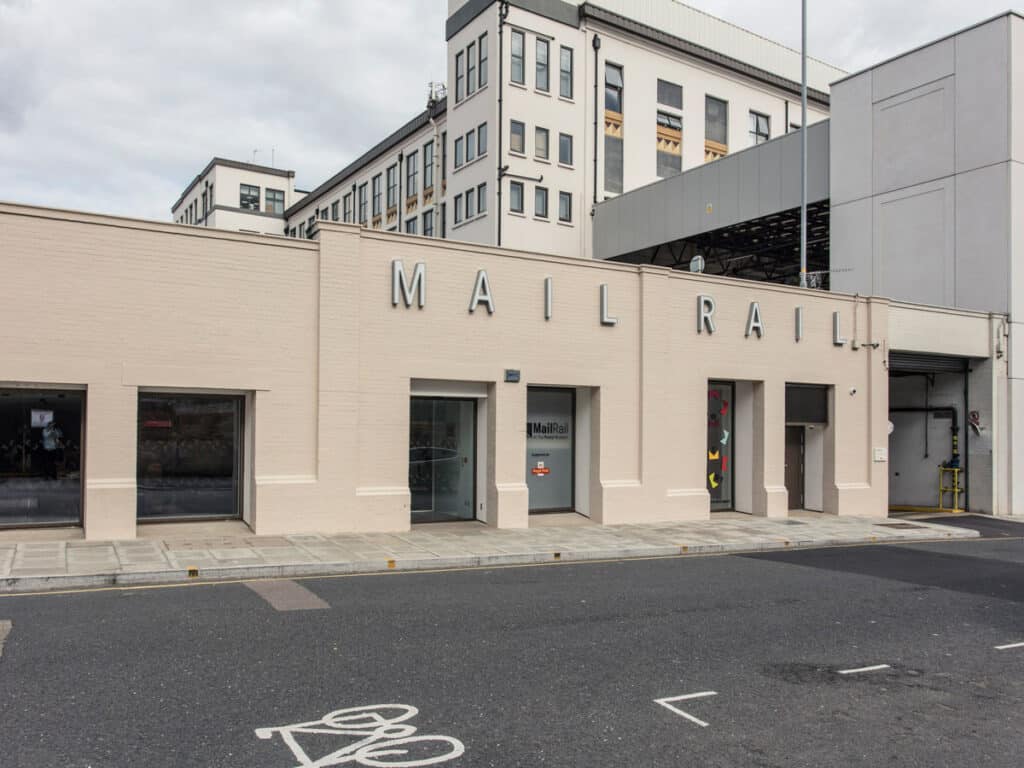Scuttling beneath the streets of London is Clerkenwell’s historic Mail Rail. Once the postal service hub, it is now a unique, interactive ride 21 metres below ground. Here you can climb aboard the miniature train, explore the original tunnels and learn how the postal railway in London began.
Words by Karen Olney
Now, what if we were to tell you that you can ride a labyrinth of tunnels in a train so small, you’d struggle to swing a cat? And along the way, you will learn everything there is to know about the history of the postal service?
Well, it’s actually a thing. And it’s brilliant.
Way before we could simply ping an email or ‘like’ a Facebook post, the Royal Mail was the social network for civilians. Built in 1927, this underground post office railway revolutionised how post was transported between sorting offices.
Lasting approximately 15 minutes, the Mail Rail at the Postal Museum is a fun and informative way of bringing the history of the postal service to life.
And after your ride, you can cross the road to see more exhibitions at the Postal Museum.
Why Visit The Mail Rail?
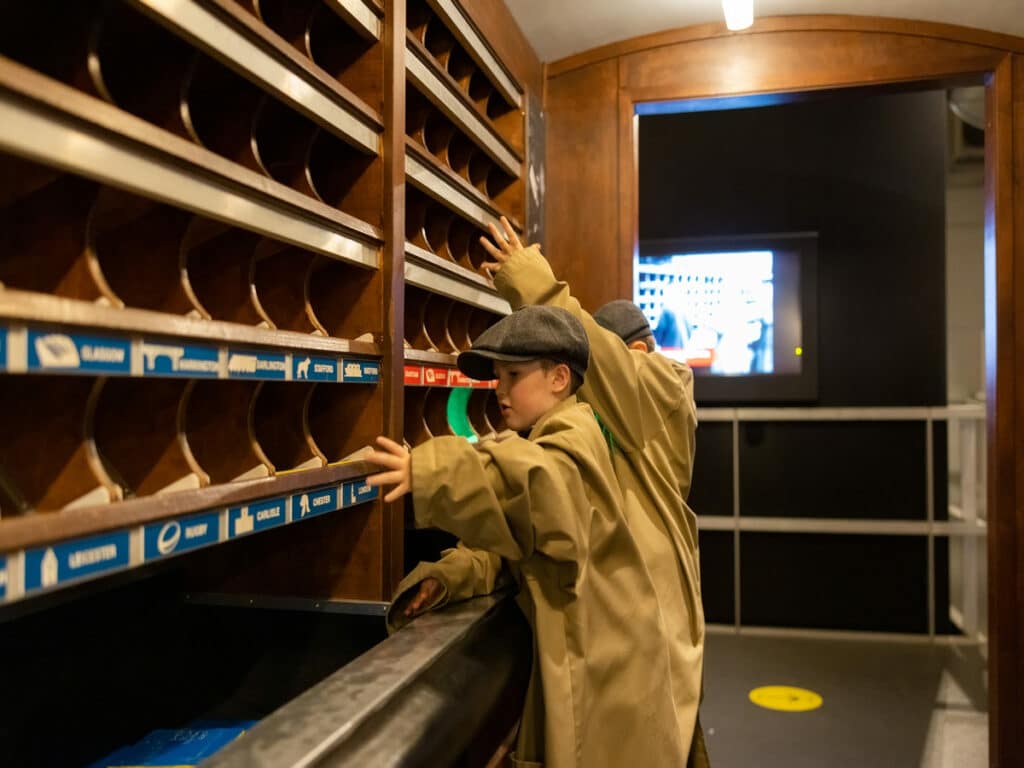
To be fair, learning about the Post Office’s history might not be quite at the top of your bucket list.
But what we love about this experience is just how novel it is.
I mean, when do you ever get to whizz around London in a train so small you can’t scratch your armpits? (Ok, noted this is probably a daily occurrence for some commuters).
Squeeze yourself onboard and begin your journey at the maintenance depot. There isn’t much room, but lockers are nearby for your belongings. Then as the train departs, the glass roof offers a panoramic vision of the tunnels.
Throughout the ride, the train stops to show large projections on abandoned platforms, narrating the Mail Rail’s history through the ages.
Word of warning, though – this is not for those nervous in small spaces.
After the train ride, you can discover the Mail Rail museum exhibition. There are many hands-on activities, making it great for kids too. Dress up as a train driver in the replica postmasters’ wardrobe or climb onboard an original train.
Bringing little ones? For an added fee, you can take the experience further in the Sorted! play area. This is a fantastic, imaginative play area featuring a mini town where kids can post letters, sort mail and let off some steam. It’s pretty adorable stuff.
Better yet, Mail Rail tickets are not too pricey, and you can easily spend half a day here. If you book online beforehand, adult tickets are £16 and child tickets are £9.
The History of The Mail Rail
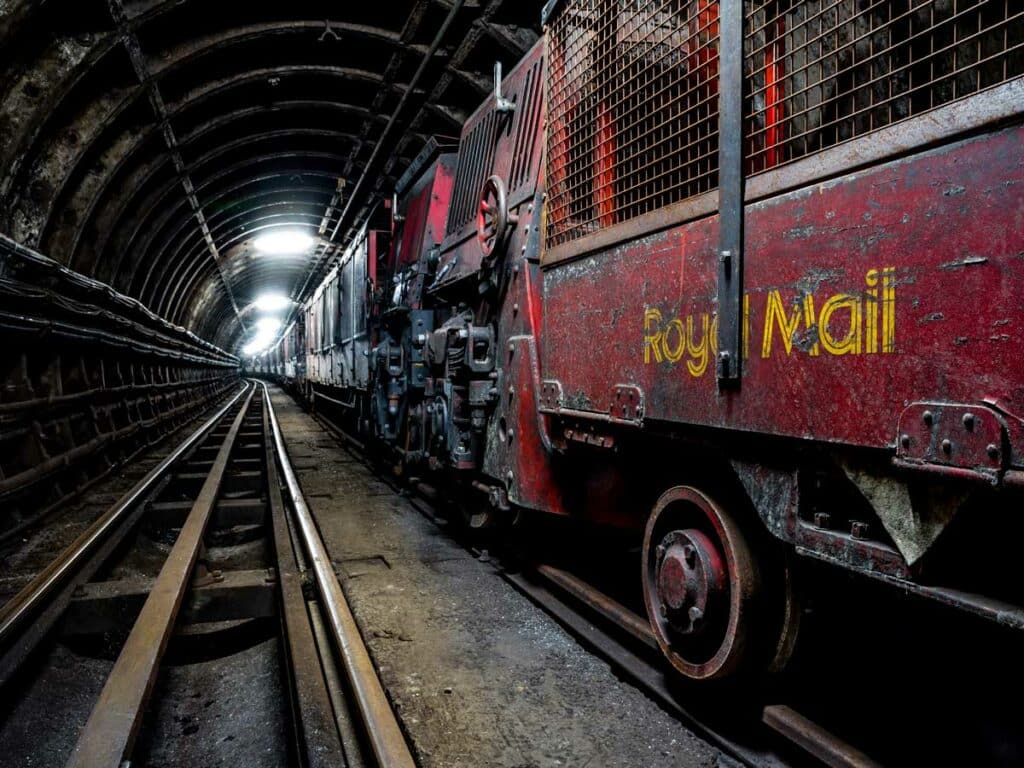
Digging into the history of the Mail Rail is far more interesting than missing letters and delayed parcels. We learnt quite a few interesting facts along the way.
Postal Coaches were Targeted by Robbers and…. a Lion
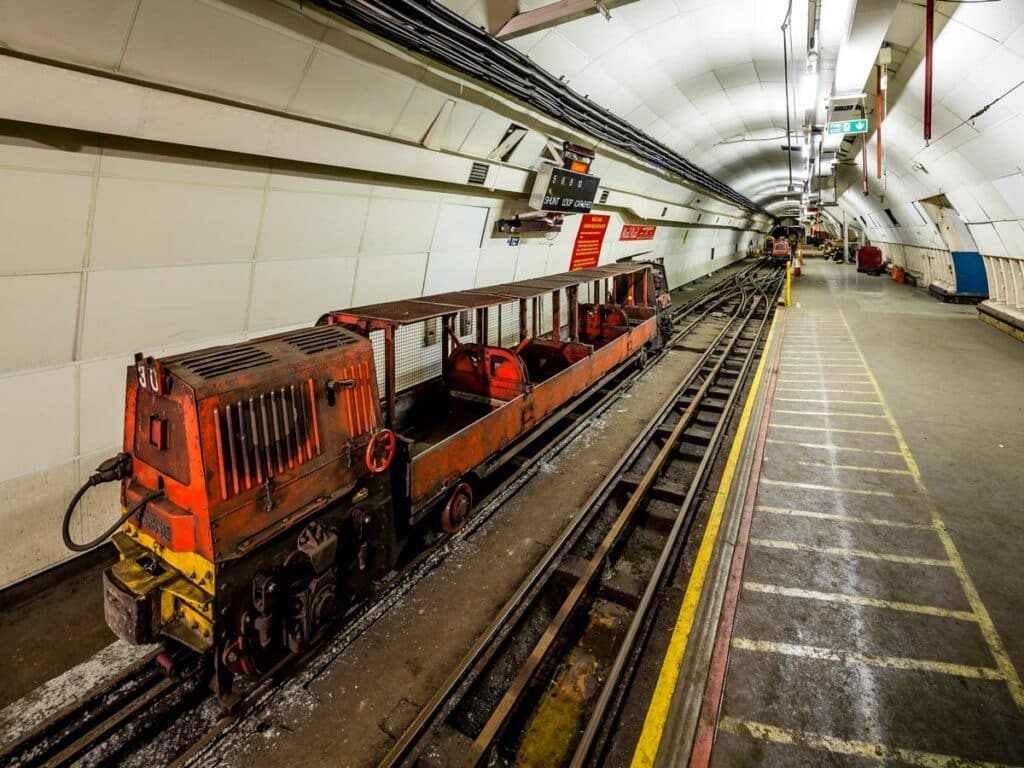
Nowadays, postal workers may encounter the odd grumpy dog, but back then, moving mail on the roads wasn’t for the faint-hearted. Traditionally, drivers delivered mail on coaches and were prime targets for highwaymen.
And it wasn’t just robbers drivers had to avoid. On the Exeter-London route in 1816, a fearsome lion attacked a coach on Salisbury Plain. You can’t fault the postal workers for commitment, though – the mail arrived just 45 minutes late that evening.
The Mail Rail enabled postal workers safety from robbers and wild animals.
In the 1900s London Traffic Was Even Worse
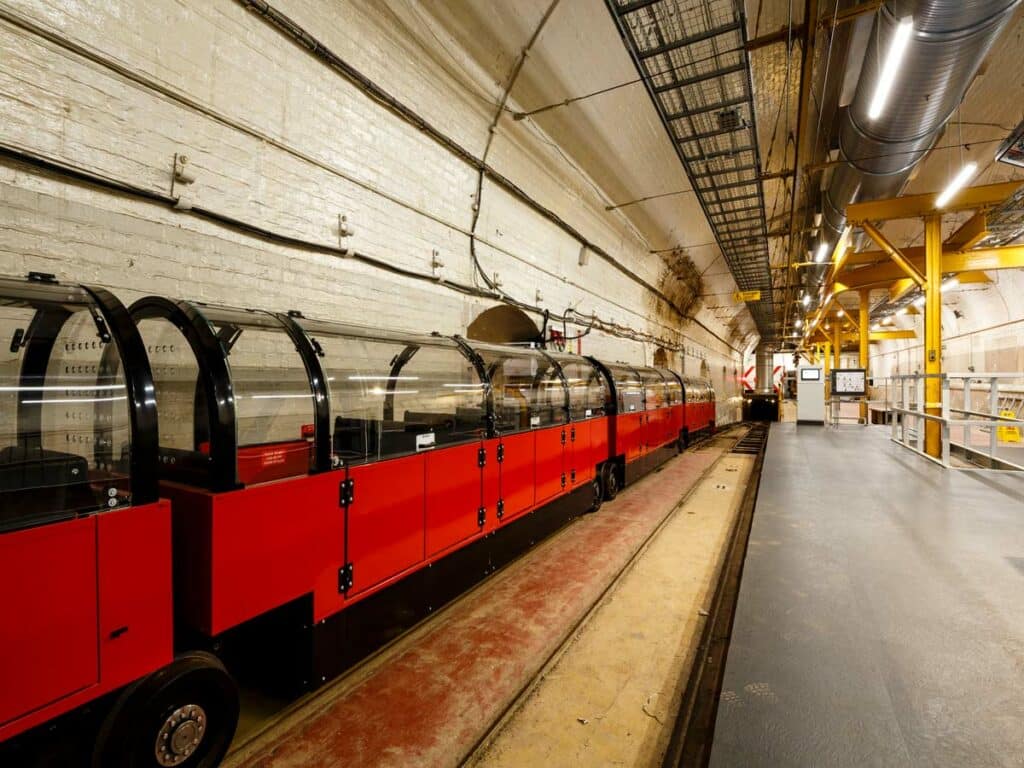
Today, London’s traffic is a nightmare. But back then, it was even slower. In fact, one report, which prompted the construction of the Mail Rail, stated that the speed on London roads would never go above 10kmph.
In the early 1900s, London’s Central Mail Centre was one of the busiest mail centres in the world and needed a helping hand.
Cue the Mail Rail.
Approved by Parliament, the construction of the post office underground railway began in 1915. It consisted of a network of narrow tunnels criss-crossing over 6 miles and linking six sorting offices with the two mainline stations, Paddington and Liverpool St.
The Mail Rail Was a World First
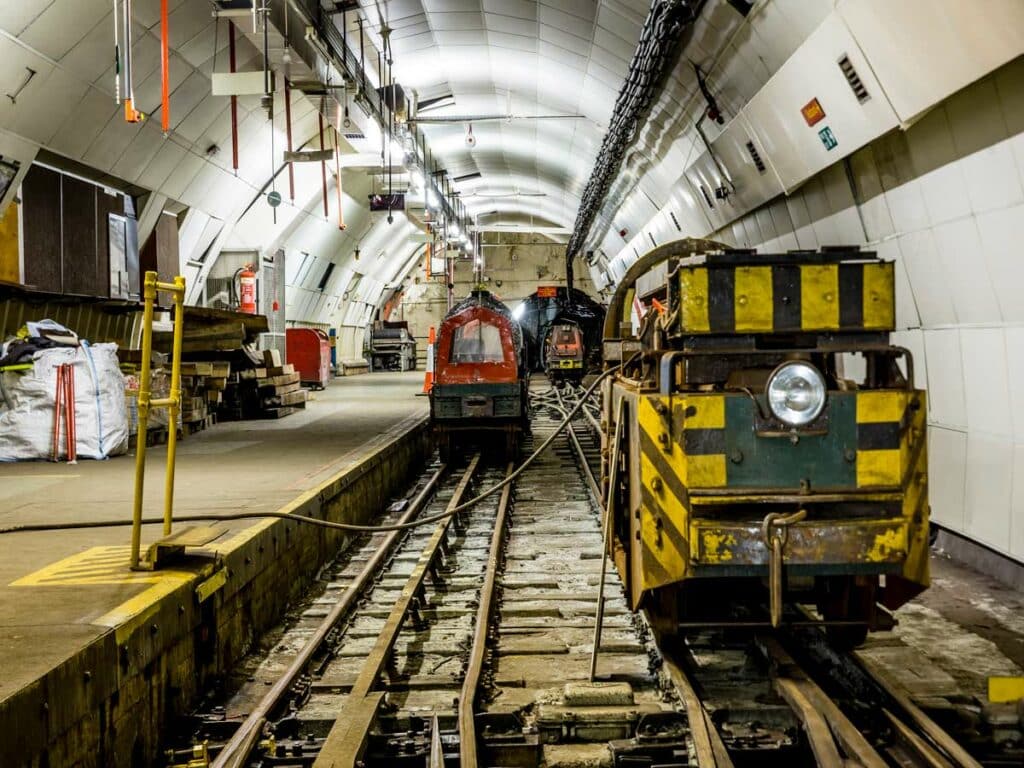
The London Mail Rail was hailed as the world’s first driverless, electric railway, carrying mail quickly across London.
At its peak, it transported four million letters a day for 22 hours a day. Operators controlled the trains by using a switchboard.
Construction Was Delayed by War
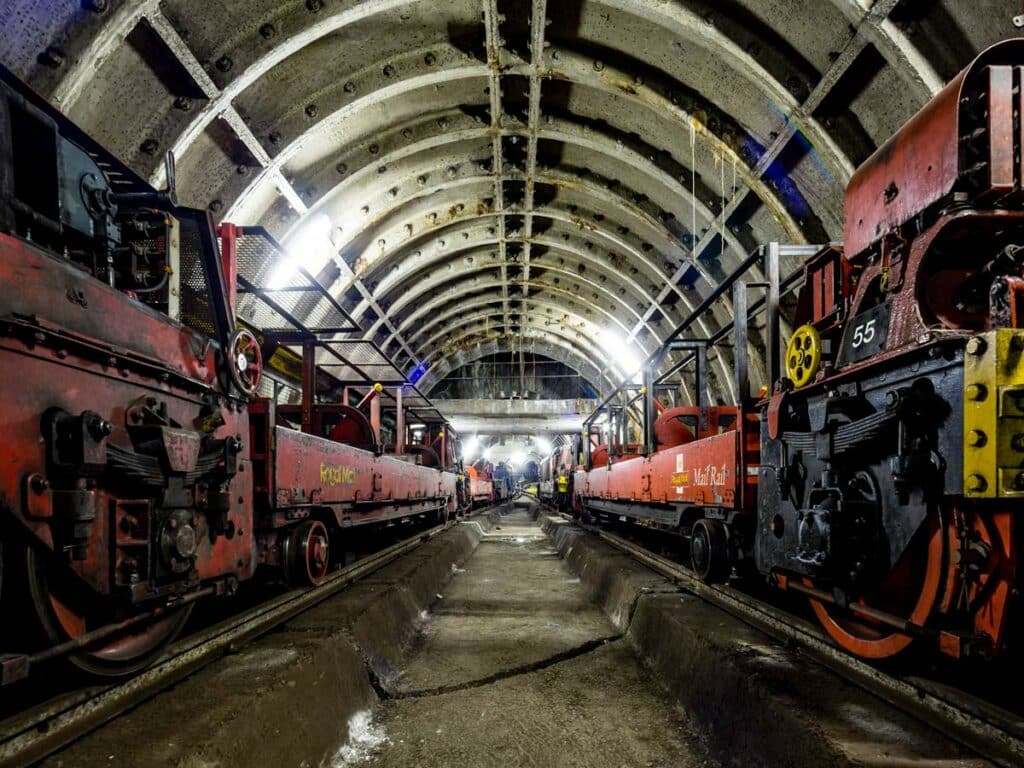
Construction wasn’t easy. The project began in 1915 and was completed on December 3rd, 1927.
There were several hiccups along the way. The Treasury paused construction during The First World War, and once it was over, the cost of materials rocketed, meaning work on the Mail Rail tunnels didn’t resume until 1923.
The tunnels still came in handy during wartime, though. They were used to protect art usually housed in the National Portrait Gallery, British Museum and the Tate Gallery.
Doors Officially Closed in 2003
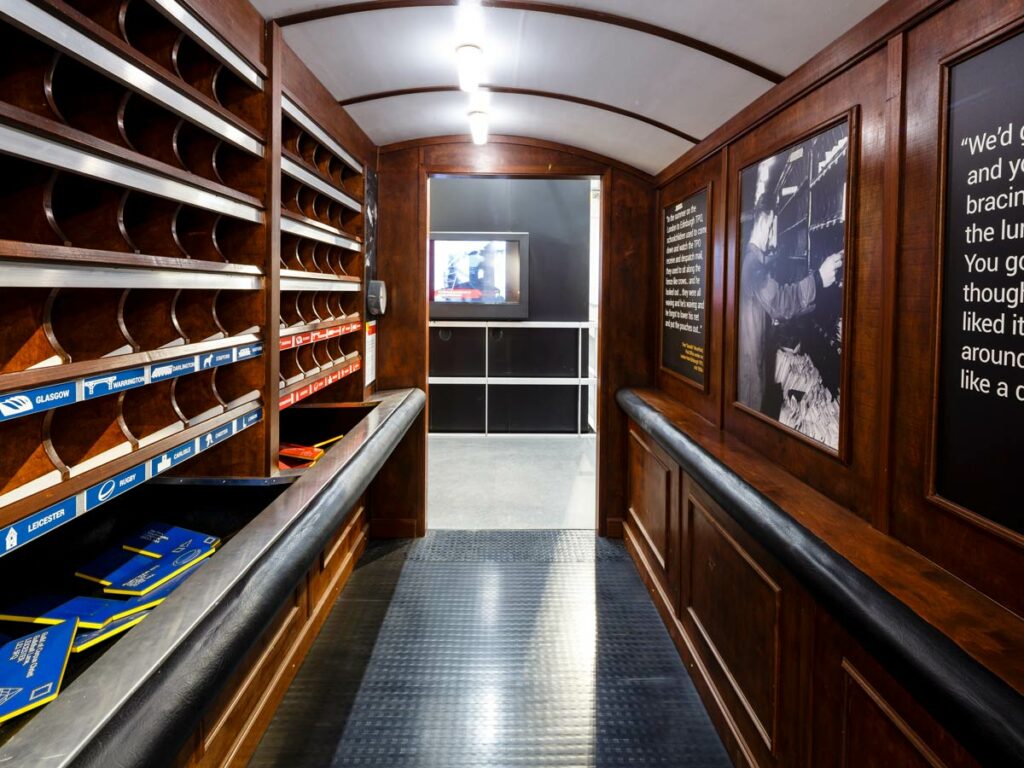
As offices began to relocate to the suburbs and technology developed, the Postal Museum train became economically unviable and was mothballed in 2003.
However, the tunnels remained under light maintenance and opened to the public as a museum in 2017.
Our verdict? London’s post office railway is a stop worth boarding at.
The Mail Rail: Practical Information
Address: The Postal Museum, 15-20 Phoenix Place, London, WC1X 0DA
Opening Times: Wednesday- Sunday 10.00- 17.00
Mail Rail Tickets: Adult (25+) £17, Young Person (16- 24) £12, Child (3- 15) £10. Online discount available.

